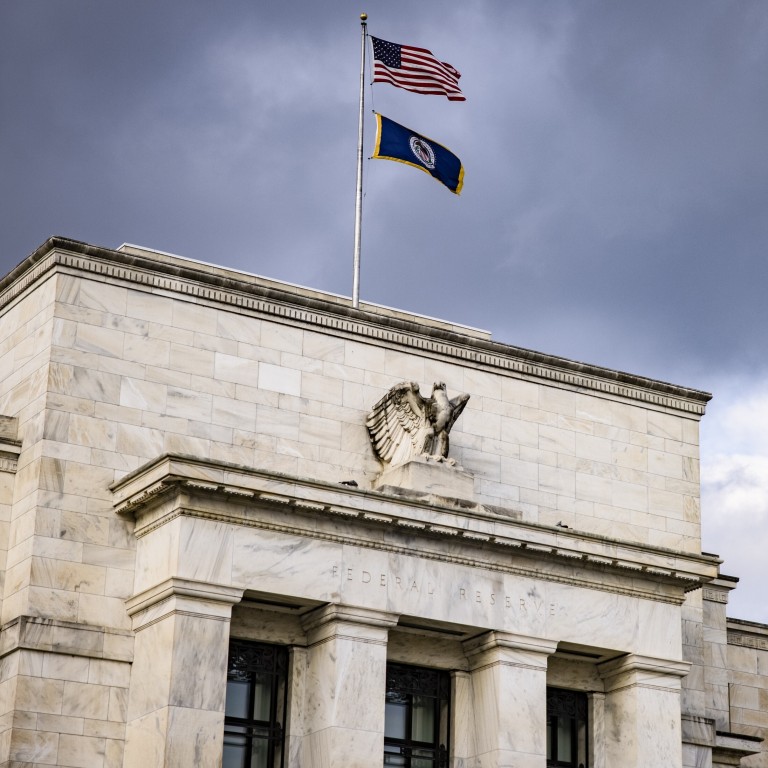
What does US bond ‘taper tantrum’ mean for China’s financial markets?
- Sharp sell-off in the US Treasury bond market this week triggered declines in financial markets around the world
- But China’s government bond market, in particular, has shown it is relatively resilient to the rise in US Treasury yields
A sharp sell-off in the US Treasury bond market on Thursday – triggered by worries of higher US growth, inflation and interest rates – caused declines in financial markets around the world and evoked memories of US Federal Reserve policy moves in 2013 that resulted in a reactionary panic nicknamed the “taper tantrum”.
The 10-year US Treasury yield jumped as high as 1.6085 per cent on Thursday, returning to a level last seen before the coronavirus outbreak in the United States. The resulting sharp decline in US stock markets, and a rebound in the US dollar, heaped pressure on Asian equities and currencies on Friday.
Back in 2013, the Federal Reserve’s decision to begin scaling back, or “tapering”, its programme of buying bonds from the market to inject additional liquidity – quantitative easing – sparked an investor flight from emerging markets on fears that their markets would collapse. The financial downturn turned out to be only temporary, but investors coined the phrase “taper tantrum” to describe the sharp market reaction to the Fed’s move.
Analysts say Asia’s emerging markets have taken various measures to improve the stability of their economies, such as opening up markets and increasing their foreign exchange reserve holdings, so they are in a much better position this time around to withstand any sudden shifts in capital flows.
In 2013, five emerging Asia economies – including Thailand, Indonesia and India – all had large current account deficits, making them vulnerable to shifts in capital flows. The only Asian emerging market countries with deficits now are Pakistan and Sri Lanka, according to Gareth Leather, senior Asia economist at Capital Economics.
China’s government bond market, in particular, has shown it is relatively resilient to the rise in US Treasury yields, with optimism that the yuan (RMB) exchange rate will continue to trade in the recent range of 6.40-6.50 to the US dollar because of China’s rapid economic recovery after bringing the pandemic under control. A higher yuan exchange rate means it takes more yuan to purchase one US dollar, indicating a weaker Chinese currency.
“Conventionally, a spike in [US Treasury] yields would trigger a sell-off in emerging bond markets. [But] the story is different in China, where the country’s economy has been on a growth trajectory,” said Cary Yeung, head of Greater China debt at Pictet Asset Management (Hong Kong). “Inflation is also reasonably contained, and the pandemic is under control. These factors all contribute to stable RMB bond yields.”
Below are three risks in China’s financial markets to pay attention to, given the threat of higher US bond yields and a stronger dollar:
1. US-China relations
The biggest risk to China comes in the form of fading hopes for a reset in relations with the US, especially in light of recent comments and actions by the new administration of President Joe Biden, said Alicia Garcia-Herrero, chief economist for Asia-Pacific at Natixis.
“US-China extreme competition will become more pervasive. This kind of risk will affect China and will affect the rest of the world,” Garcia-Herrero said. “The executive order is aimed at separating the value chains in the semiconductor and tech space between the US and China, with the help of South Korea, Japan and Taiwan.”
“We’re at an inflection point between those who argue that – given all the challenges we face, from the fourth industrial revolution to a global pandemic – autocracy is the best way forward … and those who understand that democracy is essential … to meeting those challenges,” Biden said.
2. Withdrawal of policy support
“[Chinese] officials have begun paring back state support, thrusting credit risks back into the spotlight,” Williams said. “Strains in China’s corporate bond market continue to grow, with the value of defaults hitting an all-time high.”
US dollar-yuan exchange rate: what is it and why is it important?
3. Weaker yuan
While the value of the yuan has been an outperformer over the past several months because of China’s relatively rapid rebound from the coronavirus, the country can also allow its currency to take a bit of a “hit”, currency analyst Shyam Devani said on the online financial research forum SmartKarma.
China is considering loosening its capital controls to allow larger outflows to ease pressure on property prices and investment-fuelled credit growth in unproductive sectors. But Beijing will need to tread cautiously after its experience in 2015-16, when financial opening-up caused extreme turbulence, rapidly turning capital inflows into outflows.
This week’s decline in the yuan warrants close attention, Devani said, arguing that the hike in US bond yields is not over yet and could see the yuan weaken to 6.6185, before its next resistance level of 6.7460.

